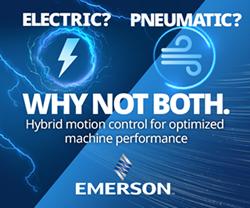The benefits, obstacles and future of edge computing
Industrial Internet of Things (IIoT) enabled devices generate a huge amount of data, but processing all of this data within the Cloud comes with challenges in latency and cost. Using the edge to complement the Cloud can help to overcome these hurdles.
Gartner predicts that around 75 per cent of enterprise-generated data will be created and processed at the edge by 2025. Edge computing is a rapidly evolving market, and while there are many benefits, there are still some hurdles to adoption. Here Martin Thunman, co-founder and CEO of edge analytics platform developer Crosser, shares his expert insight into the advantages, obstacles and future outlook of edge computing.
Industrial Internet of Things (IIoT) enabled devices generate a huge amount of data, but processing all of this data within the Cloud comes with challenges in latency and cost. Using the edge to complement the Cloud can help to overcome these hurdles.
Edge computing allows data to be filtered and streamlined locally, meaning minimal data is sent to the Cloud, which creates savings in bandwidth and storage costs. In addition, processing data at the edge means it has a shorter distance to travel, resulting in faster response times and almost instantaneous machine to machine (M2M) communication.
The edge analytics market is growing, with a survey of 900 IT professionals by AI-powered application resource management company Turbonomic finding that almost half are already leveraging edge computing or plan to do so in the near future. Despite this, there are still some obstacles that are preventing all companies from embracing the edge.
Overcoming obstacles
According to the Turbonomic survey, the biggest barrier to edge adoption is a fear of complexity. Many companies are hesitant to adopt new technologies as they view their IT landscape as something incredibly complex, making them cautious to make any changes. However, this perception can be changed by adopting a low code edge analytics platform that was built with simplicity in mind.
Instead of using extensive coding languages, low code platforms use visual interfaces and straight-forward drag and drop modules. This provides an intuitive system that doesn't require users to have any coding and programming experience. This means employees companywide can understand and work on the platform, thus assisting in IT projects when needed.
In addition, industrial businesses should not view their edge analytics journey as one huge challenge, but rather break it down into small steps. Taking on too many projects at once is bound to overwhelm companies. Instead, they should start with small projects that are easy to implement and finish, then gradually add layers to build a highly sophisticated analytic system that extracts value from data. It's a scalable technology, and organizations should capitalize on this.
Focusing on the future
The future of edge computing is bright. There's evidence that the market is growing rapidly, and more companies are looking to leverage it in their operations. Great potential lies in integrating artificial intelligence (AI) and Machine Learning (ML) at the edge, which can allow process decisions to be made in real time. According to Markets and Markets, the edge AI software market size is expected to reach USD 1.8 million by 2026, growing at a compound annual growth rate (CAGR) of 20.8 per cent.
Edge AI creates an efficient and reactive control system, allowing fast process optimization. For example, if there's a machine fault, the AI system can quickly make the decision to stop the machine to avoid product damage.
About Crosser Technologies
Crosser designs and develops Streaming Analytics, Automation and Integration software for any Edge, On-premise or Cloud. The Crosser Platform enables real-time processing of streaming, event-driven or batch data for Industrial IoT and Intelligent Workflows. It is the only platform of its kind that is purpose-built for Industrial and Asset Rich organizations.
The solution is built to fight complexity with simplicity through the Crosser Flow Studio, the visual design tool that enables teams to innovate faster than ever without developers. The software is ideally suited for Enterprise customers of various industries and applications, including Edge Analytics, Industrial Connectivity, Industry 4.0, Streaming Analytics, Hybrid Integration and Intelligent Workflows.
Industrial customers include, SCA AB, Valmet Corporation, Gebhardt, Clarebout Potatoes and RubbleMaster.
Crosser was included in the "Cool Vendors in IoT Edge Computing, 2018" report by Gartner, Inc. and was named among the Top 10 Smart Factory Solutions in Europe 2020 by the industry magazine Manufacturing Technology Insights.
Featured Product

